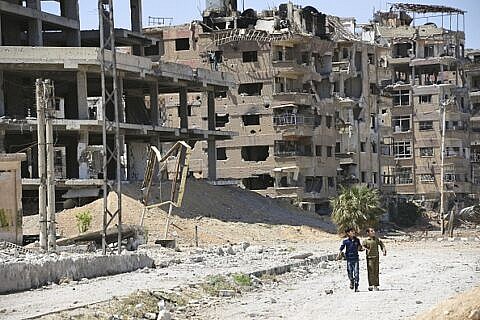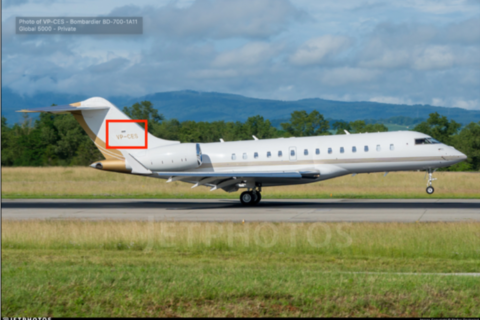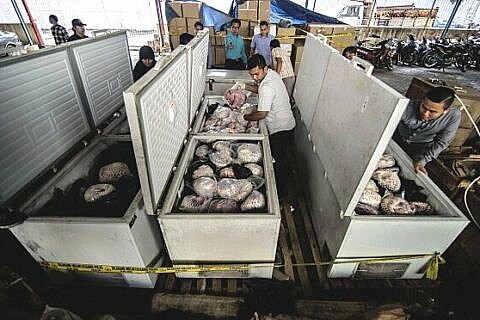Assets in Flight

Using open flight data and public announcements, C4ADS tracked Cameroon president Paul Biya’s travel, and unveiled the truth behind his “brief private stays” on trips abroad.
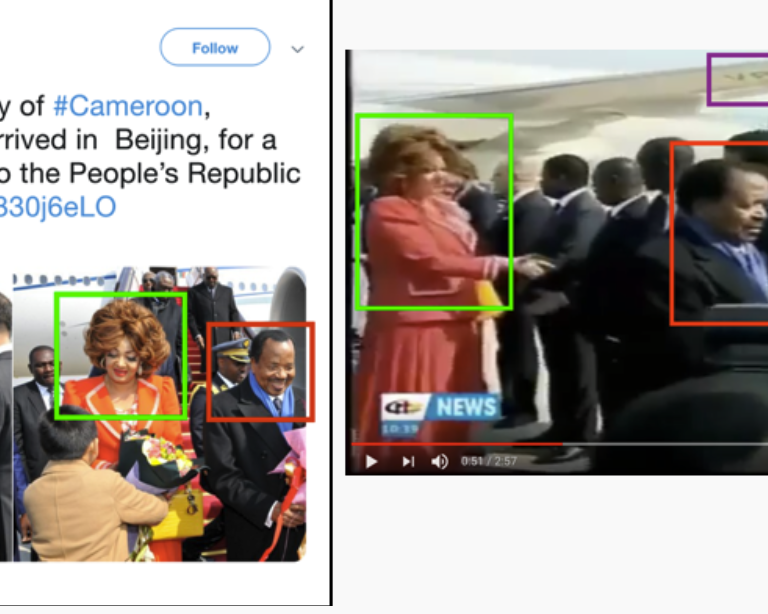
Paul Biya, Cameroon’s octogenarian President, was re-elected to a record-setting 7th term in October 2018, becoming the longest serving non-royal head of state in the world. The October presidential election was marred by violence, particularly in the north-west and south-west Anglophone regions where a separatist insurgency has raged since 2016, threatening to split the country along linguistic fault lines. Despite the roiling tensions and escalating violence, President Biya is known for spending an inordinate amount of time outside the country on private, unofficial foreign visits. A February 2018 investigation by the Organized Crime and Corruption Project (OCCRP) estimated that over the course of his 35 years in power, President Biya has spent at least four and a half years on “brief private visits” (often to Europe, and specifically Geneva), including a third of the year in both 2006 and 2009.

President Biya’s jaunts into Europe frequently pass through Geneva, where his documented stays have included a 2017 trip for which his entourage booked at least 48 rooms at the Intercontinental Hotel, the site of significant protests during his most recent stay in July 2019. OCCRP estimated that the President has spent at least $65 million for his accommodations at the Intercontinental Hotel. All told, the President and his entourage have spent 1,645 days at the Intercontinental.
A quick look at the President’s Official Twitter and Facebook pages reveals surprisingly candid announcements of his “brief private stays” in Europe, either at the time of departure or return. These announcements are distributed from the Office of the President’s official website, and provide a helpful public guide into both his official and unofficial foreign excursions.
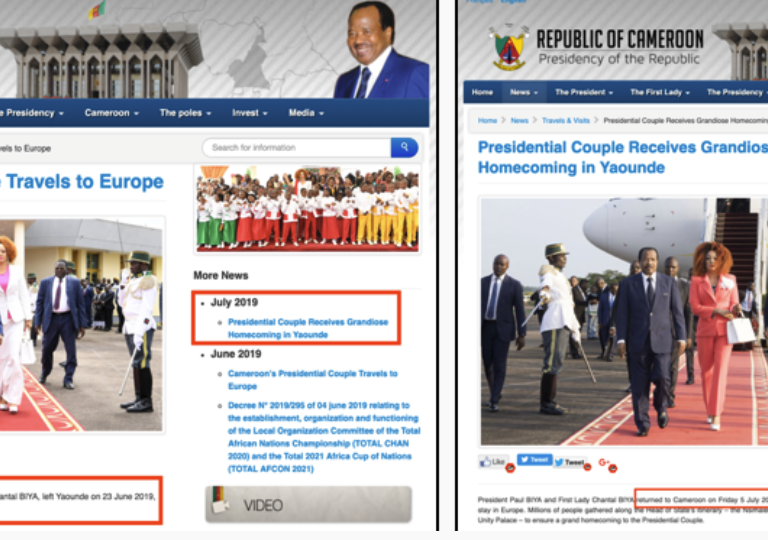
Despite the public nature of these announcements, they provide only a small glimpse into the President’s travels. These public announcements are also fairly sanitized and do not include identifying information like flight itineraries and/or imagery of the transport aircraft – an integral component of open-source analysis of aircraft activity in the public domain.
However, open flight data can help identify not only the President’s destinations, but also the type of aircraft used, as well as the duration of travel. Using public announcements as a starting point, we took a historical look at aircraft associated with the Government of Cameroon and identified at least 30 trips to Geneva between May 2008 and December 2013, many of which are conducted by a government-affiliated Gulfstream III aircraft. Narrowing down to this aircraft’s travel activities, we discovered additional trips to other Swiss cities, some as recent as July 10, 2019. That these flight activities are identifiable through open data serves a specific public interest: removing the veil of secrecy often exploited by the President when his trips abroad are characterized as “brief private stays.”
Tracing Cameroon’s Executive Aircraft Fleet #
In the absence of a fully accessible civilian aircraft registry in Cameroon, C4ADS investigators consulted the LAAS registry of corporate aircraft, which provides a listing of private corporate aircraft registered under Cameroon’s national aircraft code, “TJ.” This list included two planes, one a Gulfstream III (Registration Number: TJ-AAW), and the other a Cessna 550 Citation Bravo (Registration Number: TJ-ROA).

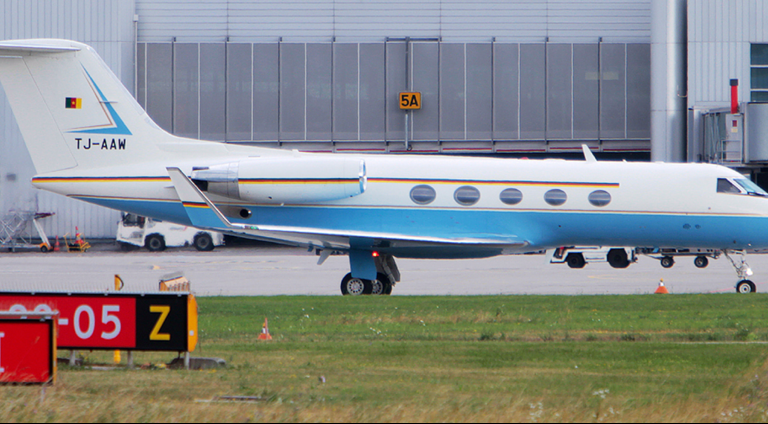
While the ownership of both planes is not available through the Cameroonian Civil Aviation Authority (CAA), both aircraft appear in the CAA’s Aviation Safety Information System, which lists the minimum equipment requirements for aircraft registered in Cameroon. This dataset, despite its safety focus, serves as a valuable proxy for a domestically-generated aircraft registry.
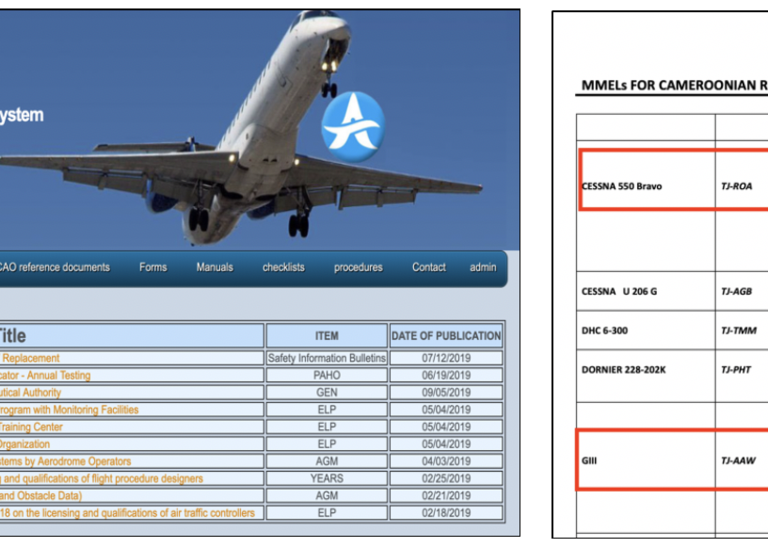
Tracking President Biya’s Frequent Jaunts to Geneva #
Since 2008, a community of aircraft enthusiasts (colloquially known as plane-spotters) have aggregated aircraft landing and take-off events at airports near Geneva into a publicly accessible dataset available on the Geneva Airport Movement Enquiries (GAME) website. This dataset is updated on a monthly basis and provides an individual listing of each take-off and landing event. C4ADS investigators explored the GAME database for all take-offs and landings events linked to the two aircraft associated with the Cameroonian government and found 30 events involving the Gulfstream III (Registration Number: TJ-AAW), some of which are displayed below.
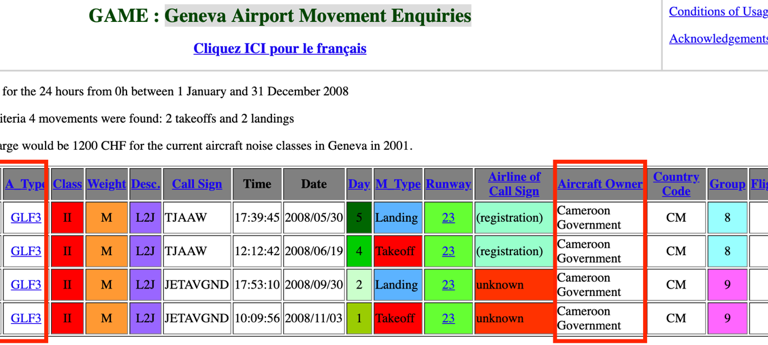
As evident on the GAME site, information on the origin and destination of these flights is often minimal, if not entirely lacking. However, other open source flight data repositories such as ADS-B Exchange can provide a more detailed view into the routes and trajectories taken by the aircraft linked to Paul Biya and the Cameroonian government. Additionally, this type of flight data widens the scope of inquiry beyond specific airports.
For instance, in a review of 2019 trips involving the Cameroonian Gulfstream III aircraft (Registration Number: TJ-AAW) on ADS-B Exchange, we uncovered at least ten transit events (meaning takeoff and landing events, which are determined based on factors such as an aircraft’s transit speed and altitude) in and around Basel/Mulhouse EuroAiport in Switzerland, many of which were not captured by the Geneva-based public plane-spotting website. As a supplement to data provided by plane-spotter datasets, ADS-B Exchange expands the scope of investigation into route and trajectory analysis, giving analysts more visibility into an aircraft’s transit patterns.
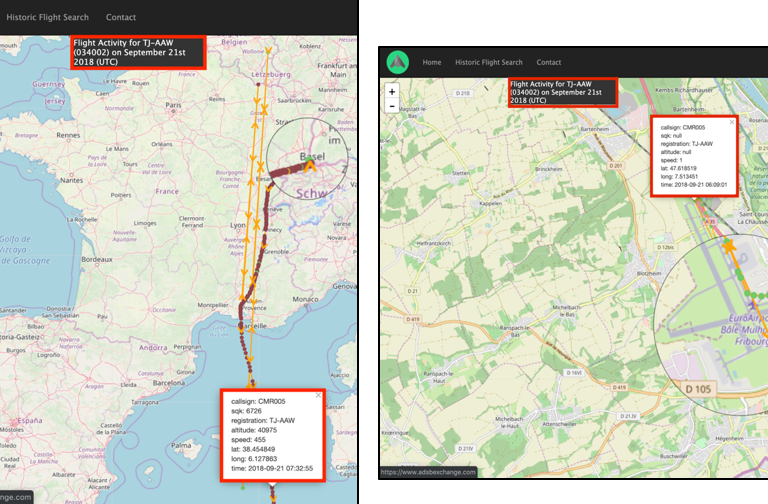
Exploiting the Charter Aircraft Loophole #
Using public disclosure of travel plans as a starting point, we also looked into the President’s official foreign travel that was also undertaken via chartered aircraft. In one case, we identified a Boeing 777-2KQLR (Registration Number: VP-CAL) also operated by Cam Air Management that was seemingly used during President Biya’s state visit to China in March 2018.
Open Source flight data from the Geneva plane-spotting consortium revealed that the trip originated in Geneva on March 20, 2018, rather than the Cameroonian capital, Yaounde. This departure was also corroborated by the historical flight tracker on ADS-B Exchange, which not only validated the Geneva departure, but also the majority of the eastward flight to China, terminating at the Hong Kong International Airport on March 22, 2018. ADS-B Exchange data similarly confirmed the President’s return trip (again to Geneva) on March 24, 2018.
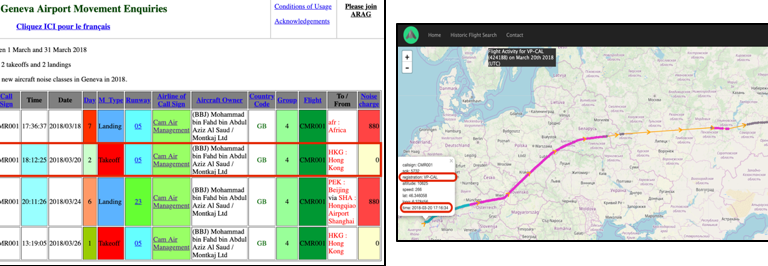
Beyond the flight data, President Biya also confirmed his arrival in China via Twitter on March 22, 2018 in a post that also included a partial image of the transport aircraft. We identified other portions of the aircraft by matching the President’s attire at the time of arrival with other videos taken take on the tarmac in Hong Kong. Both the President and his wife’s attire closely matched publicly-shared Youtube videos of the tarmac reception in Hong Kong where larger portions of the transport aircraft, including its tail code (VP-CAL), are visible.
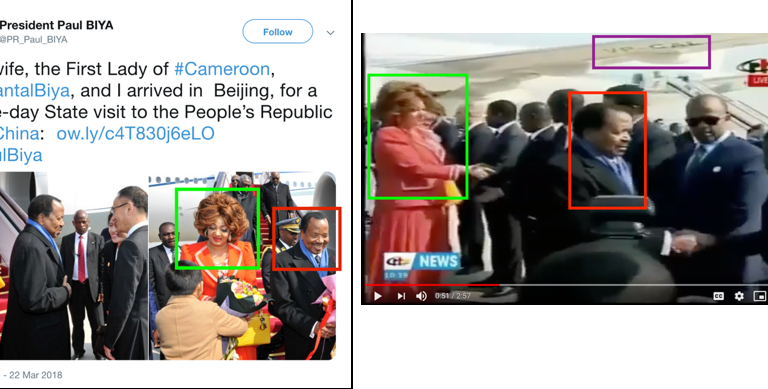
Based on the imagery from the tarmac reception, C4ADS swiftly confirmed the identity of the transport aircraft as the Boeing 777-2KQLR (Registration Number: VP-CAL) that appeared in the plane-spotters database in Geneva. This aircraft also re-appeared in arrival logs in Geneva during the President’s return trip on March 24, 2018 which was similarly observable on the ADS-B Exchange historical Flight viewer.

Altogether, this brief look at President Paul Biya’s foreign travel highlights the relative ease with which researchers and investigators can use public reporting (including official state disclosures) to map the activities of absentee leaders around the globe. This research also identifies the use of chartered aircraft as a potentially understudied aspect of corruption research especially given the high cost of these chartered trips, and the burden placed on local tax payers many of whom cannot afford the luxury enjoyed by their publicly elected officials.
